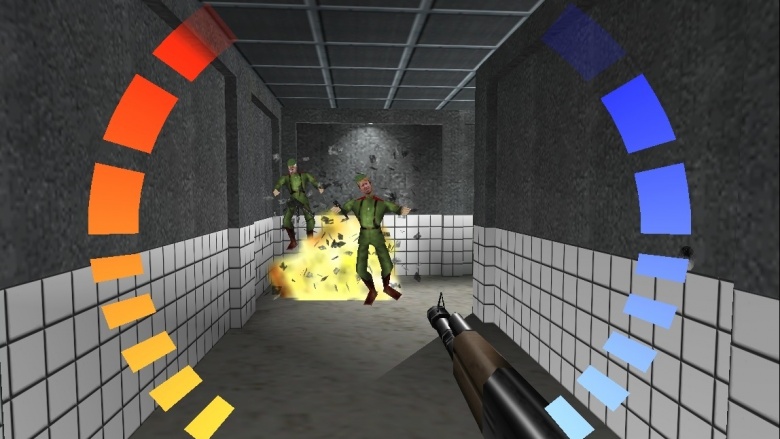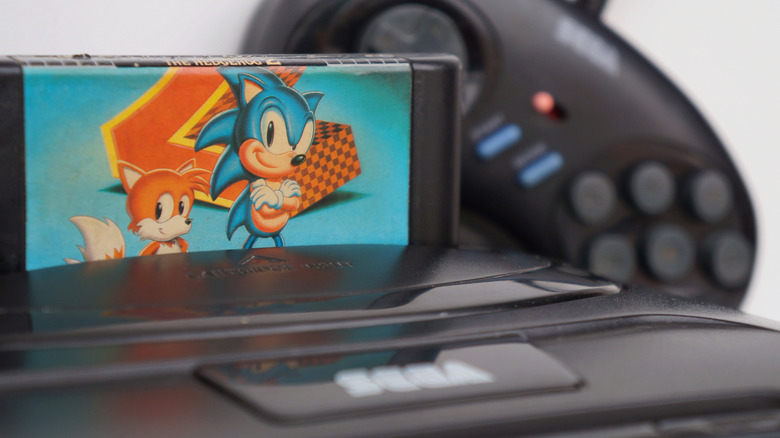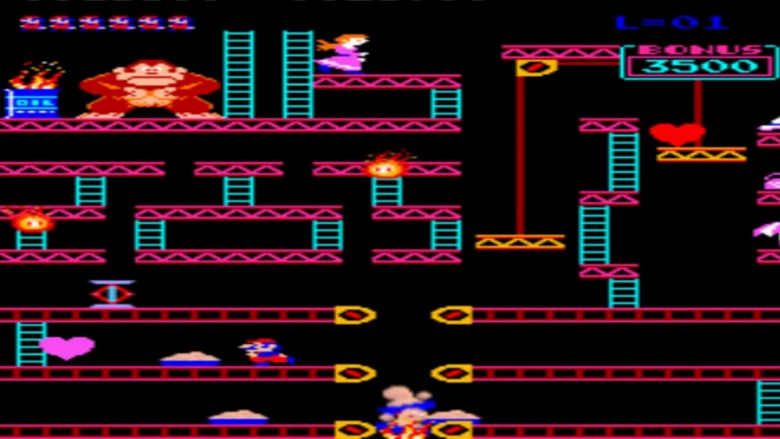Video Games That Once Looked Totally Different
Remember all those classic video games you grew up with and how iconic many of them are? Well, odds are, they didn't start out the way you remember them. Like, at all. Any great art goes through multiple drafts, changes, chopps, screws and alterations before the final product, and video game development is no different. Some video games, like the following, started out looking completely differently than the final product.
Doom
Doom didn't start out as an iconic franchise in the making. Rather, the original concept for Doom was just another licensed game, based on the Alien movie franchise. iD Software later chose to abandon the license, in order to get more creative control over the video game. And thus was born Doom.
If you've ever played the game, though, you can see the original concept didn't actually change much, despite dropping the Aliens license. In the film, space marines travel to a Moon infested with monsters, and shoot them with a variety of fun and interesting weapons. In Doom, space marines travel to a Mars filled Hell demons, and shoot them with a variety of fun and interesting weapons. Totally different!
By the way: Because the code for the original Aliens game was released as shareware, people have been modding it ever since it was released. One of the most popular mods lets you play the game as it was originally realized. Kind of. Simply called Aliens TC Mod, the game's graphics and other elements have been modified to make it into a rather awesome Aliens game. It's not exactly what iD had in mind, but still, you can play the game's original concept ... to a certain extent.
GoldenEye 007
Nintendo 64's Goldeneye 007, years later, is still widely seen as one of the best first-person shooters ever. And yet, during its development, it was never intended to be that. Instead, Goldeneye's life began as a standard 2D side-scrolling platformer for the Super Nintendo.
The video game's development came towards the end of the SNES's life cycle, so the game's director, Martin Hollis, proposed to instead utilize the power of the developing Ultra 64 console (the original, much cooler name for the N64) to realize the game's true power. With this switch, the plan for a 2D side-scroller was scrapped for an on-rails shooter using a light gun. This would have been pretty similar to the hit Sega game Virtua Cop but, like the 2D plan, this too was eventually scrapped for the familiar first-person shooter people still play today.
Also, the game's multiplayer mode — arguably its most impressive and beloved aspect — was only added as an afterthought. A programmer named Steve Ellis is responsible for creating it, but he never got permission to do it. Nobody bothered to tell Rare or Nintendo management anything, and they only found out about it when it was finished and the game was already late, so they had no time to send it back with a "nice try, smartass, now just do what we say" sticky note. Considering it went on to inspire games like Call of Duty and the Halo franchise, we're very glad nobody wrote that sticky note.
Sonic the Hedgehog
Nintendo has Mario and Sega has Sonic. But while Mario has basically stayed the same throughout the years, the same cannot be said for Sonic. The hedgehog we all know and love actually began life as a long-eared rabbit, one with a human girlfriend, no less.
Yep, one of the first concepts for Sonic was a rabbit who could use his ears to throw objects. This was ultimately scrapped, as the chips available on the Genesis weren't advanced enough to properly animate the ears in action. Other Sonic appearance considerations included an armadillo, chicken, wolf, bulldog, robot, clown, and a human viking warrior, until finally they settled on familiar, loveable little hedgehog we have all come to love.
However, while Sonic The Life In Hell Bunny was still a possibility, Sonic developer Naoto Oshima sketched out ideas for Sonic's girlfriend. And she was not a bunny, but rather an Us. Think Jessica Rabbit from Who Framed Roger Rabbit, but as a buxom blonde instead of a redhead.
Final Fantasy VII
Final Fantasy VII is often cited as one of the best, most revolutionary RPGS ever. Of course, the game didn't begin this way, and wasn't even intended for the PlayStation at first. The story also took a few twists and turns into what was finally released, but the original concept probably would have still made for a pretty good game.
When FF7 was first envisioned in 1994, series creator Hironobu Sakaguchi planned for a 2D Super Nintendo game. He envisioned the game would take place in New York City in 1999, and would be more akin to a detective story that what we actually got. It was meant to follow a character named — and we are not kidding here — Detective Joe. Cloud. Aeris. Sephiroth. Joe. One of these things is not like the others.
Soon, development on the video game was stalled, due to Chrono Trigger taking precedent for the company. When development resumed in 1995, the original 2D SNES thing was scrapped, and the designers began to focus on the developing Ultra 64. Development costs ballooned, and it became the most expensive project of its kind for the time, costing an estimated $45 million in 1995 dollars. As it progressed, it became clear the game wouldn't work on the cartridge-based Nintendo 64, since the game's graphics and cinematics would require the extra storage space allowed by CD-ROMs. Ties were severed with Nintendo, Joe and New York got the boot, and the result is the PlayStation game we all know and love.
Donkey Kong
The original Donkey Kong is one of the most recognizable video games from the '80s, and of all time. And yet, it almost didn't happen at all — in fact, Donkey Kong began its development as a Popeye game. Yes, that Popeye.
Originally, Nintendo sought the license to make a Popeye game, where Popeye would march up a building to save Olive Oyl from Bluto, but failed to get the license from King Features. So they kept their original game idea, but changed the characters. Instead of Popeye, we got Jumpman (Mario). Olive Oyl became the lovely Penelope, and Bluto became a giant gorilla named Donkey Kong, which we're sure he was just honored about.
Interestingly enough, Nintendo earned a Popeye license years later, and released a sequel, which was similar to what Donkey Kong became. Sadly, Popeye: The Spinach Strikes Back (not its real name, but it damn well should've been) didn't light the world on fire the same way a plumber and a monkey did so effortlessly.
Banjo Kazooie
Banjo Kazooie is one of the more popular games for the Nintendo 64, but it started out as something completely different, when development began in 1997. The original concept came from a game called Project Dream, which was in development for the Super Nintendo by Rare. The video game starred Edison, a boy armed with a wooden sword who would become entangled with pirates on an adventure. After some work, Rare decided to replace Edison with a rabbit, which evolved into a bear (nobody ever wants to be a rabbit), and finally the brown honey bear that became Banjo.
The game was also supposed to feature more levels and a multiplayer mode, but due to time constraints, the developers had to drop these plans from the final game. The game's sequel, Banjo-Tooie, was able to incorporate most of these plans, and thankfully no wooden swords or bunnies on top of it.
Halo
When people think of Halo, they think of a first-person shooter, so it may surprise you to learn that it was once meant to be, of all things, a real-time strategy game for the computer. It was still called Halo, though, so there's that.
In July 1999, Steve Jobs announced Halo at the annual Macworld Conference & Expo, as a game planned for both the Macintosh and PC platforms. The original concept was similar to the hit strategy game Myth, but in a sci-fi setting. By the time the game was displayed at E3 in 2000, however, it was completely different from the original design. The game was no longer a real-time strategy game, and had evolved into a third-person action game. The plot was different too, though it still featured a halo. See, the halo in the early designs was more like a Ringworld, a vast ring orbit full of civilization. Players fought a guerilla campaign against the Covenant forces on the Ringworld, due to their technological inferiority. There was no Master Chief, and players assumed the role of a regular soldier.
Everything changed when Microsoft bought Bungie Studios in 2000. With the purchase of the studio, the video game became an exclusive Xbox title (for the time being). The game was modified into the first-person shooter it is today, with Master Chief as the main character, an extensive backstory, and no Ringworld. But if the idea of Halo as a strategy game whets your appetite, they did finally realize that vision in 2009, with Halo Wars. Enjoy!
No Man's Sky
No Man's Sky was both the most anticipated video game of 2016 and its biggest disappointment. There was so much planned, and so much promised, and yet so little delivered because the reality of development simply wouldn't allow it. Here's just a sample of everything "No Man's Lie" started out with or promised, but never made it into the final game:
Multiplayer interaction with other players was completely absent from the final game, as was proven by two players on the PlayStation 4. Both stood in the same location at the same time, but neither could see the other; Large-scale battles that players could join were also featured in the reveal trailer, but completely absent from the game. We were also promised an absence of load times, but transition between points turned into exactly that. There were no ringed or desert planets. Oh, and large fleets of space-faring civilizations were gone from the final game, and the complex creature behavior and differentiation between planets never made it either. Most people landing on a virgin world would instead find the same animals resembling genitals with long legs as they did on the previous dozen planets.
We could write a whole book about the disappointments and changes from the original development of No Man's Sky and what was ultimately delivered, but we simply don't have the space on this site to publish it all. If only Hello Games were as honest as we.



